Direct-to-consumer or DTC ecommerce is a retail model in which a business designs, creates, and sells its products to the end consumer.
DTC has increased in popularity over the last 10 years, largely due to prominent startups like Warby Parker, Casper, and AllBirds that follow this model. But while high-revenue startups have popularized the DTC model, it’s not just for venture-backed businesses. DTC can be successful at any scale—including small businesses—with the right strategy.
We’ll take a closer look at specific brands, but first, let’s talk about how the DTC model differs from traditional ecommerce, why brands opt for it, and some of the challenges of choosing a DTC model.
Traditional vs DTC Ecommerce
To fully understand DTC ecommerce, it is helpful to compare it to the traditional retail or ecommerce model. Traditional retail includes intermediaries, often referred to as “middlemen” in DTC advertising. These intermediaries are typically wholesalers that procure large quantities of product from manufacturers and then sell them to retailers. In this case, retailers are paying slightly higher prices than the wholesalers. Still, the benefit is that retailers can purchase in smaller quantities than if they went directly to a manufacturer.
Sometimes, there is even another layer between the manufacturer and wholesaler, called a distributor.
In the DTC model, the products go right from the manufacturer to the customer as one company manufactures, advertises, and sells the products.
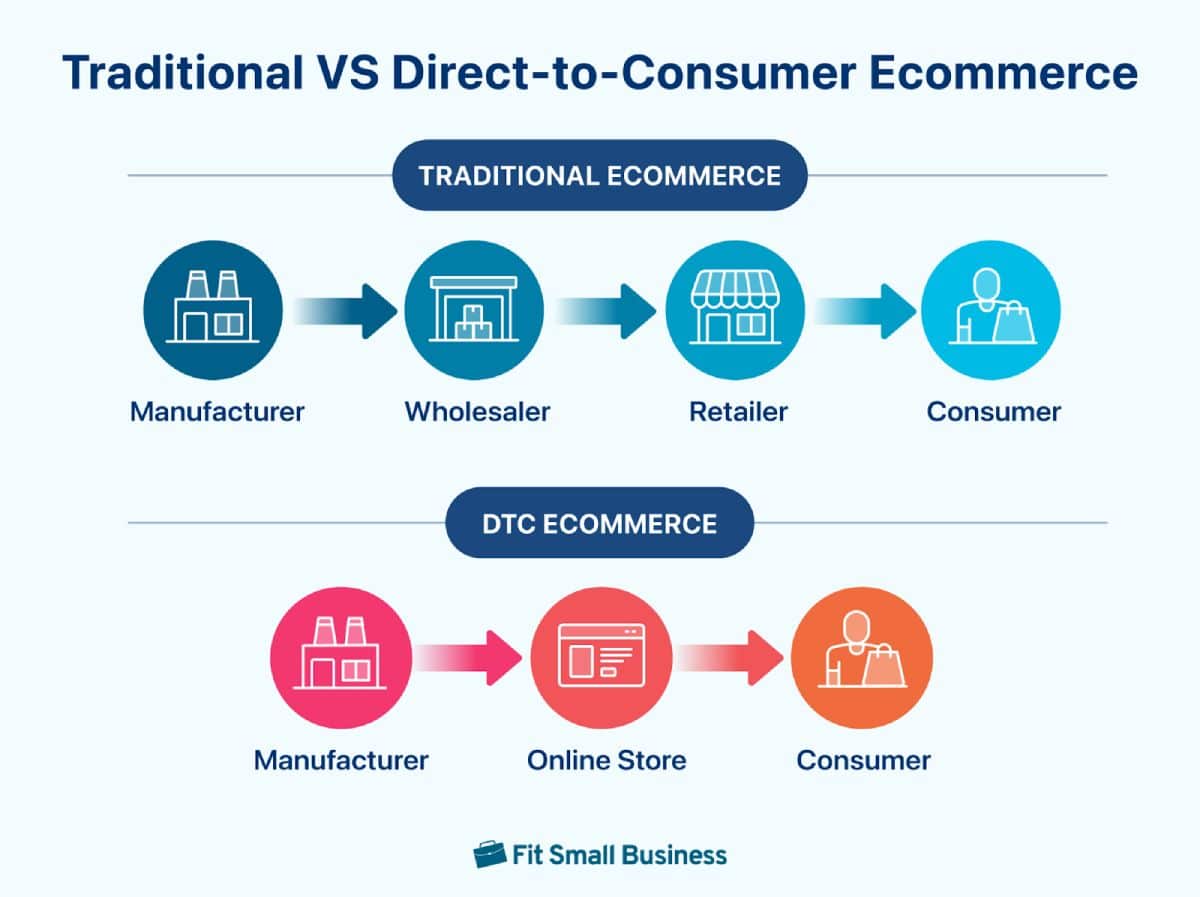
Advantages of DTC
- Cuts out the intermediaries: One of the primary appeals of the DTC model is that it “cuts out the middlemen,” allowing products to move faster from production through sale.
- Control: As a DTC business, you own the entire process from product design through sale, so you have complete control over the products, quality, customer experience, branding—you name it.
- Customer engagement: You can engage directly with your audience without your message or branding getting diffused through other channels. You can get fast feedback and quickly adjust to customer interests and demands.
- Owned audience: Similarly, as a DTC company, you own your audience data—email addresses, purchase history, interactions, etc. Your following is built specifically by and for your brand. Owned customer data makes it easier to create targeted and personalized marketing campaigns. In contrast, if a shopper buys your product from Amazon or a department store, Amazon and the department store own that customer data.
- Scalability: Since you own your manufacturing process and supply chain, it is easier for you to scale into new product lines and higher product volumes, and adapt to market changes.
Challenges of DTC
- Customer acquisition and retention: Although the DTC model offers the benefit of having an owned audience, attracting that audience is extra challenging. Ecommerce is an incredibly crowded space and it is difficult and expensive to break into the field and gain not just customers’ attention but also sales.
- High customer acquisition costs (CACs): Similarly, the cost of acquiring customers is only increasing. Ten years ago, it was possible to build an audience solely from reasonably priced Facebook ads. Social ads, Google ads, and more or less any means of brand exposure you can think of are more saturated and expensive than ever. Because of these challenges, more brands are opting for a wholesale model (if they are manufacturing products) or marketplace sales—both of which typically have lower CACs.
- Inventory & logistics: While you have complete control over your supply chain, you also have the responsibility of managing those complex inventory and logistics needs.
- High startup costs: This largely depends on the scale of your business and your products, but the initial investments in product design, prototyping, and developing your manufacturing process can be extremely high—much higher than simply purchasing inventory.
Related reading:
- Fighting Rising Direct-to-Consumer Customer Acquisition Costs
- Calculating CAC & Tips to Reduce it
- DTC e-commerce: How consumer brands can get it right
Case Studies: Lessons Learned From Successful DTC Brands
Let’s dive into three different well-known DTC brands that each take a slightly different approach. The first one, Warby Parker, focuses on convenience. Dollar Shave Club (DSC) emphasizes a subscription and recurring revenue model, and Glossier focuses on community building and branding.
Warby Parker
Warby Parker is possibly the best-known example of a DTC brand, as it was one of the first highly popularized DC brands in the huge DTC wave of the 2010s. The company disrupted the eyeglass industry by offering affordable glasses online. Programs like “Buy a Pair, Give a Pair” and free at-home try-ons made the brand extra appealing to customers and helped to ease hesitations around buying glasses online.

(Source: Superside)
In more recent years, Warby Parker has expanded to brick-and-mortar stores, including offering in-store eye exams.
Dollar Shave Club (DSC)
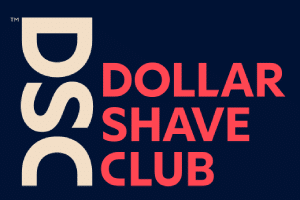
Dollar Shave Club is a subscription-model DTC brand that originally offered several varieties of razors and has since expanded into a broader personal care brand. DSC stood out for its reusable razor handles, affordable price points, and witty/humorous marketing campaigns.
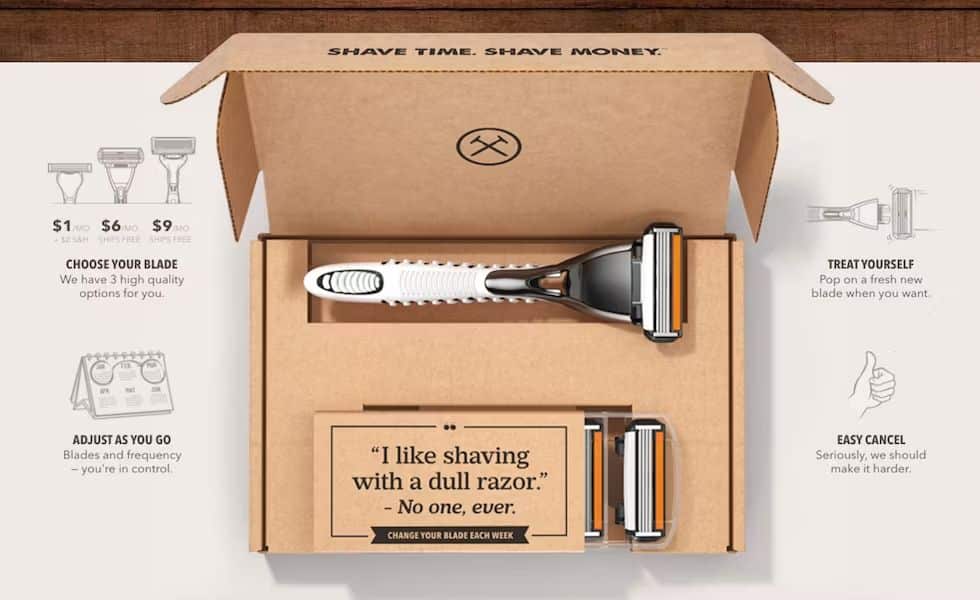
(Source: MarketingWeek)
Its subscription-based model also offered more predictable and steady revenue streams. Eventually, DSC was acquired by Unilever.
Glossier

Glossier is a beauty brand that actually started as an online beauty blog, Into the Gloss, which was founded and authored by a styling assistant at Vogue. It built a loyal community of readers by profiling, interviewing, and exploring the beauty routines and lives of different women.
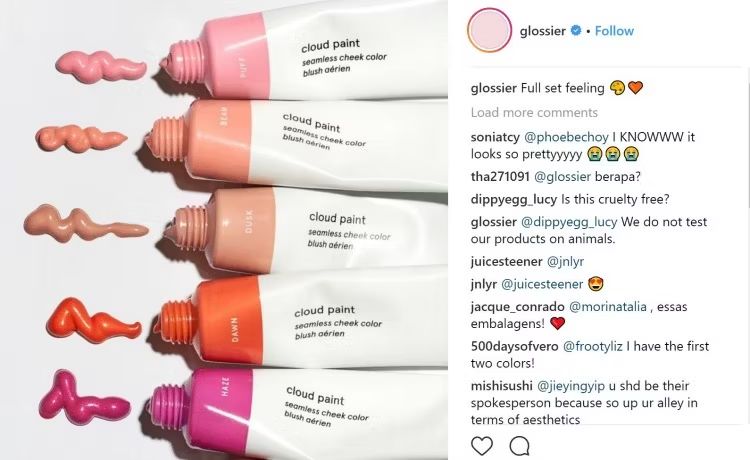
(Source: MarketingWeek)
After building that audience, Into the Gloss launched Glossier with just a few signature beauty products. The benefit of this approach is that Glossier already had an eager customer base—Into the Gloss readers.
What All Three of These Examples Have in Common
While Warby Parker, DSC, and Glossier all started out with slightly different approaches, they all now have something in common: Since launching, they have expanded sales channels and revenue streams.
- Branching out into retail: After launching as an online store, Glossier then started hosting pop-up events, eventually opening brick-and-mortar stores nationwide and even internationally. Similarly, Warby Parker also opened brick-and-mortar locations nationwide.
- Selling wholesale: In recent years, Glossier started selling products into Sephora, a beauty retailer, following a more traditional retail model. DSC products can now also be purchased at Target and from Amazon.
- Additional services and products: Warby Parker has expanded by hiring on-staff optometrists to offer eye exams and prescriptions for lenses. DSC expanded into skincare, haircare, soaps, body wash, and all kinds of personal care products geared towards male shoppers.
In short, if you’re considering a DTC model, be prepared to diversify down the road.
Is DTC Viable for Small Businesses?
Yes. Though challenging, it is still possible to start a small, successful direct-to-consumer ecommerce business.
The key is having a clear plan and vision for your business. Though the brands mentioned above went through several rounds of venture capital funding, it is possible to replicate this model on a smaller scale.
For example, The Two oh Three is a small business in Connecticut that designs and creates its own products—either through screen printing, embroidering, ordering custom products, or working with other local businesses.
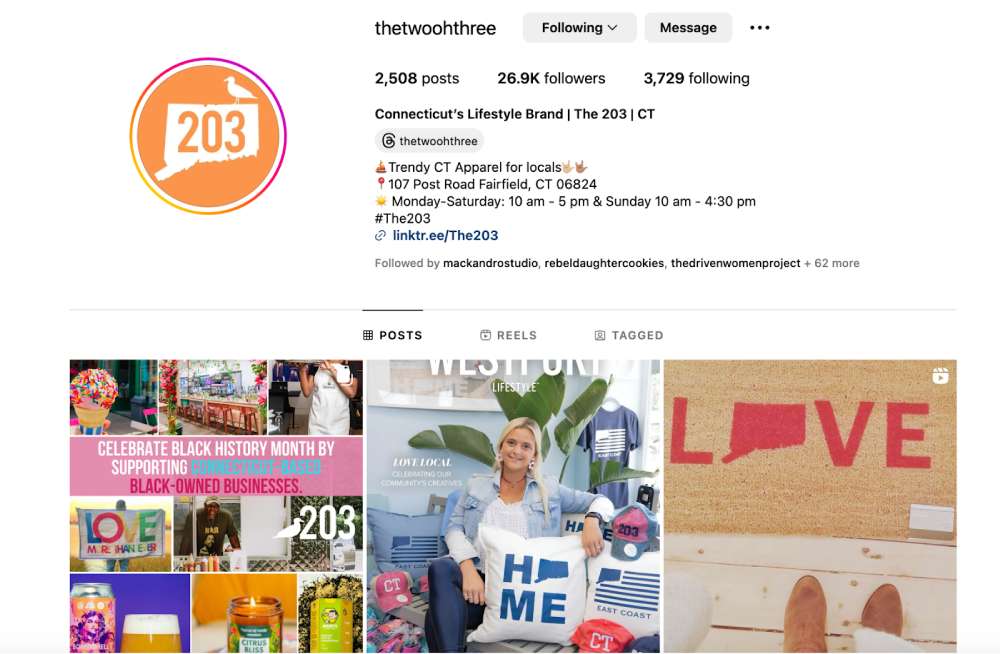
The Two oh Three has a highly visible and highly engaged social media presence.
The name of the company comes from the local area code, which is featured on almost all of the company’s products. This makes its products appealing to locals, college students either attending school in the area or feeling nostalgia for their home state, and tourists visiting the local beaches.
Two oh Three initially started as an online store (with a very strong social media presence and local media presence) that also hosted pop-ups. From there, the company expanded by selling its products to boutiques and other local retailers. Finally, a few years ago, The Two oh Three opened its own brick-and-mortar store.
Key takeaways:
- Start small
- Serve a niche market
- Be creative and vigorous when it comes to customer acquisition
Bottom Line
Understanding how direct-to-consumer ecommerce works, along with its intricacies and challenges, is the first step toward deciding whether or not it is the right approach for your business. Whether you’re starting a new venture or looking to expand your existing one, DTC offers an exciting and challenging opportunity with the potential for big payoffs with an owned audience and strong brand recognition.